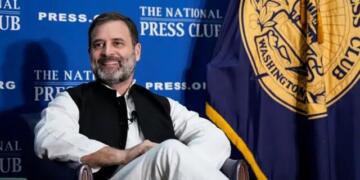It is common for world leaders to be in the U.S. at this time of the year. The reason of course is the United Nations General Assembly’s annual session. Most leaders take this opportunity to have some engagements on the sidelines too, since they have travelled from far and might as well. But Prime Minister Modi isn’t like most leaders. When he made this trip last September, it served as an announcement to the world that a dormant India had come back to life. He energized the diaspora in a way that was never seen before. This time too he has two pointed agendas- U.N. reforms and trade.
India not being given a permanent seat in the United Nations Security Council can be compared to Narendra Modi not being given a U.S. visa for years. A time came when the Americans were left with no choice, and were made to look like fools for their erstwhile obstinacy. If the way things stand right now are any indication of what is to come, the world order will have a bowl of I-told-you-so for desert in the next few years.
Certain practical-minded elements with no political ego seem to have realized the same, and are seriously working towards giving India the importance it’s worthy of. They are the business community of course, and leading the pack is Silicon Valley.
The buzz around the Facebook town-hall that Zuckerberg will host for Narendra Modi is building up. Google’s CEO Sundar Pichai too released a video welcoming Modi to Silicon Valley. Apart from the personal admiration that these men hold for Modi or the inspirational value that Narendra Modi holds himself, these overtures are highly strategic. Soon, India will become the largest market for these internet giants.
We’ve known for a while that something of this sort will happen soon. But the dynamics of just how soon, change drastically in a Modi-led India. In July 2014, two months after Narendra Modi came to power, internet penetration in India stood at 19%. The number of users was 243 million and its annual growth rate was 14%. This was a high growth rate, but soon it began to seem rather paltry. When the number crossed 300 million last December, the growth rate over one year had hit 32%. India had surpassed U.S. in terms of the number of users, and was firmly in second position. In the first half of this year, India added an unprecedented 52 million users. This takes the number of users to over 350 million and internet penetration to over 27% percent. (Of these, 60% use the internet through mobile devices.)
But there’s something more baffling than these colossal growth rates. It is predicted that the current growth rate (100 million new users per year) will be sustained till 2017. This will mean half a billion Indians on the internet in little more than a year. Among Narendra Modi’s pet projects is Digital India, and there are ample signs to show that this is no hogwash. The blueprint for the government’s 72000 crore nationwide broadband network BharatNet is likely to be approved in the next two months. The government aims to make it operational by the end of 2017. The 21000 crore National Optical Fiber Network (NOFN) which will connect two and half lac villages with a high speed broadband network will become operational at the end of 2016. (NOFN was conceived during UPA’s time and was in fact complete hogwash back then.)
Of the largest emerging economies, Russia’s and Brazil’s have stalled while China’s has slowed down. India on the other hand is going strong, and is aiming for an 8 to 10 percent GDP growth rate. With a booming economy and the advent of affordable smartphones, the country is set to become increasingly integrated. In terms of numbers though, China is much ahead of India when it comes to internet penetration. Currently it has over 650 million users, which means half the Chinese have internet access. This is more than twice the American population and should have been the big market that Zuckerberg, Pichai, and the like concentrate on. But China blocked Facebook and Twitter in 2008 after they were used to coordinate riots in the Xianjiang province. Alphabet (Google’s parent company)’s websites like Google, Gmail and Youtube also remain blocked. The services these websites offer have been taken up by numerous local players, which means even if Silicon Valley’s giants were to be unblocked they would find it hard to carve out a space for themselves now.
These are the reasons Silicon Valley looks at India today with such enthusiasm. Since it will fast become the largest section they cater to, one can expect very India-centric products to come out of the valley in the next few years. The enthusiasm however isn’t shared by the world order.
India is a nuclear state, has the second largest population in the world and the third biggest GDP. Half a billion people online will soon become another credential India could throw on the world order’s face if it doesn’t receive what is long overdue.
































